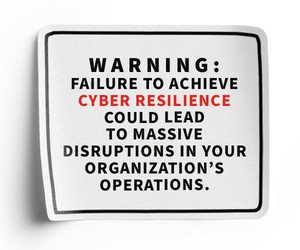Cyberattacks not only put patient data at risk but also can impact care delivery. Implementing a next-generation security information and event management system gives healthcare organizations holistic visibility into their IT environments, which could play an important role in maintaining continuity of care in a complex cybersecurity landscape.
Healthcare IT and security leaders can use next-gen SIEM to combine data feeds from across platforms, devices and vendors to uncover potential threats and compromised security within their organizations’ IT environment.
Unlike traditional SIEM, next-gen systems infuse data points from raw streaming workflows and all types of asset sources: cloud, on-premises, hyperconverged and hybrid. In short, next-gen SIEM offers healthcare organizations a unified data platform that applies modern intelligence and analytics in a real-time workflow.
DISCOVER: Choose the right SIEM tool for your organization with these insights.
Some systems also incorporate security orchestration, automation and response (SOAR) capabilities, so it's important for organizations to understand what’s on offer when choosing the right SIEM tool for their security and business goals.
Next-Gen SIEM Enables Faster Cyber Incident Response
A cornerstone of next-gen SIEM is flexible storage that can incorporate data from multifaceted sources at the volume, velocity and level of veracity that the cyber ecosystem delivers, says Sam Kinch, director of technical account management at systems software company Tanium.
"Scalability improves with tunable storage capacities and capabilities, adjustable retention policies and distributed locations across hyperconverged enterprises," Kinch says.
Efficiencies are achieved by retaining data at various storage tiers based on access needs; support for certain, optimized compression algorithms; and access models (including application programming interfaces), ensuring ready availability.
Click the banner below to begin developing a comprehensive cyber resilience strategy.
Next-gen SIEM can significantly enhance an organization’s ability to track and respond to breaches across various systems and architectures, says Sam Curcuruto, principal product marketing manager for Commvault.
"By integrating data from multiple sources, these advanced SIEM systems provide a comprehensive view of the entire IT environment, whether it's on-premises, in the cloud or within hybrid architectures," Curcuruto says.
Such tools use machine learning and artificial intelligence to detect patterns and anomalies that might elude traditional SIEM technology, thereby catching sophisticated threats early.
Next-gen SIEM also leverages automation and orchestration capabilities for swift, coordinated and sometimes fully hands-off responses to security incidents. Some automation technologies can detect a ransomware event, quarantine the affected system and roll back any changes to data with the last known good configuration.
With Next-Gen SIEM Comes Fresh Challenges for Healthcare
Integrating next-gen SIEM technology into an existing IT infrastructure can present several challenges, Curcuruto says.
"The complexity of ensuring seamless integration with diverse systems and technologies can be both time-consuming and intricate," he says. "Managing and processing large volumes of data from various sources demands significant resources."
To fully harness the benefits of next-gen SIEM, organizations should define clear objectives for its deployment, such as improving the accuracy of threat detection or reducing response times.
“Ongoing training and awareness programs for the security team are essential to effectively utilize SIEM tools and stay abreast of the latest security practices,” Curcuruto says.
Kinch recommends a hybrid approach, in which healthcare organizations push only essential data points to the SIEM tool in support of critical asset analytics, while retaining a visibility platform solution with an API that allows for real-time awareness and control of every data point from every endpoint.
“The hybrid approach benefits from significantly reducing operational next-gen SIEM costs while ensuring complete visibility and control across the enterprise,” Kinch says.












